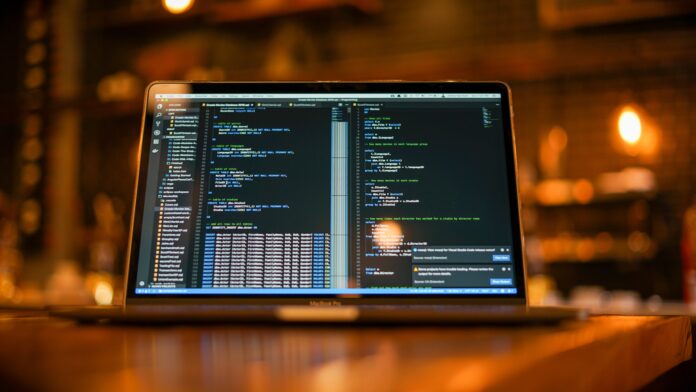RStudio is a powerful integrated development environment (IDE) designed specifically for the R programming language. It provides a comprehensive set of tools and features that facilitate coding, data analysis, visualization, and the development of R-based applications. RStudio is widely used by data scientists, statisticians, and researchers to streamline their workflows and leverage the full potential of R. In this response, I will provide you with an overview of RStudio, its key features, and its significance in the R community.
RStudio, RStudio, RStudio. These three words represent a robust and user-friendly IDE that has gained immense popularity among R users. Created by RStudio, Inc., the software aims to enhance the productivity and efficiency of R programmers by offering an integrated platform that seamlessly integrates various R-related tasks and workflows.
Now, let’s dive into the ten important things you need to know about RStudio:
1. Interactive Coding Environment: RStudio provides an interactive coding environment that includes a powerful code editor with features like syntax highlighting, code completion, and intelligent code suggestions. This makes writing and editing R code much more convenient and efficient.
2. Project Management: RStudio allows you to organize your work into projects, providing a logical and structured way to manage your code, data, and associated files. Projects in RStudio help maintain a clean workspace, keep track of dependencies, and facilitate collaboration.
3. Integrated Console: RStudio features an integrated console where you can interact with R directly. The console allows you to execute code, view output, and debug your programs. It also supports multiple consoles, enabling you to work on multiple R sessions simultaneously.
4. Package Management: RStudio provides a graphical interface for managing R packages. You can easily install, update, and remove packages, as well as load them into your R session. The package manager also provides a convenient way to explore and search for available packages.
5. Data Visualization: RStudio offers extensive capabilities for data visualization. It integrates with popular R packages such as ggplot2 and allows you to create a wide range of static and interactive plots and charts. The visualization tools in RStudio enable you to communicate your data insights effectively.
6. Version Control: RStudio seamlessly integrates with version control systems like Git and SVN. This enables you to track changes, collaborate with others, and manage your codebase more efficiently. RStudio provides a dedicated version control panel and supports features like diff viewing and conflict resolution.
7. Data Manipulation and Analysis: RStudio provides a comprehensive set of tools for data manipulation and analysis. It supports the tidyverse ecosystem, which includes packages like dplyr and tidyr, making it easy to perform tasks like data cleaning, filtering, aggregation, and transformation.
8. RMarkdown and Notebooks: RStudio supports RMarkdown, a powerful markup language that allows you to combine text, code, and output in a single document. RMarkdown documents can be converted into various formats, such as HTML, PDF, or Word, making it convenient for creating reproducible reports and presentations. RStudio also provides support for Jupyter Notebooks, which allow you to mix R code with rich text and media.
9. Shiny Applications: RStudio offers a framework called Shiny for building interactive web applications directly from R. Shiny simplifies the process of creating web-based data visualizations and dashboards without the need for web development skills. With RStudio and Shiny, you can deploy your R-powered applications online easily.
10. Extensibility and Customization: RStudio is highly extensible and allows you to customize the IDE according to your preferences and requirements. You can install and develop your own RStudio add-ins and extensions, creating a tailored environment that suits your specific needs.
These ten points provide a glimpse into the world of RStudio and its significance in the R community. From its interactive coding environment to its powerful data analysis and visualization capabilities, RStudio empowers R users to work efficiently and effectively. Whether you are a data scientist, statistician, or researcher, RStudio serves as an invaluable tool for exploring, analyzing, and communicating insights from data.
RStudio, RStudio, RStudio. These three words represent a robust and user-friendly integrated development environment (IDE) designed specifically for the R programming language. Created by RStudio, Inc., the software aims to enhance the productivity and efficiency of R programmers by offering an integrated platform that seamlessly integrates various R-related tasks and workflows.
RStudio provides an interactive coding environment with a powerful code editor that includes features like syntax highlighting, code completion, and intelligent code suggestions. This makes writing and editing R code much more convenient and efficient. The IDE also includes project management capabilities, allowing users to organize their work into projects. Projects in RStudio help maintain a clean workspace, keep track of dependencies, and facilitate collaboration.
The integrated console in RStudio allows users to interact with R directly. The console provides a space to execute code, view output, and debug programs. It supports multiple consoles, enabling users to work on multiple R sessions simultaneously. RStudio also offers a graphical package manager, making it easy to install, update, and remove R packages. The package manager allows users to explore and search for available packages, simplifying the process of managing dependencies.
One of the significant strengths of RStudio lies in its data visualization capabilities. The IDE integrates with popular R packages such as ggplot2, enabling users to create a wide range of static and interactive plots and charts. The visualization tools in RStudio help users communicate their data insights effectively, whether through exploratory data analysis or presentation-ready visualizations.
RStudio seamlessly integrates with version control systems like Git and SVN. This integration allows users to track changes, collaborate with others, and manage their codebase more efficiently. The IDE provides a dedicated version control panel and supports features like diff viewing and conflict resolution, making it easier to manage code changes.
Data manipulation and analysis are core activities in R, and RStudio provides a comprehensive set of tools for these tasks. It supports the tidyverse ecosystem, which includes packages like dplyr and tidyr, enabling users to perform data cleaning, filtering, aggregation, and transformation easily. RStudio’s focus on reproducibility is evident through its support for RMarkdown, a powerful markup language that allows users to combine text, code, and output in a single document. RMarkdown documents can be converted into various formats, making it convenient for creating reproducible reports and presentations. RStudio also provides support for Jupyter Notebooks, allowing users to mix R code with rich text and media.
Furthermore, RStudio offers a framework called Shiny for building interactive web applications directly from R. With Shiny, users can create web-based data visualizations and dashboards without the need for web development skills. RStudio simplifies the deployment of these applications, allowing users to share their R-powered applications online easily.
RStudio’s extensibility and customization options make it a flexible IDE. Users can install and develop their own RStudio add-ins and extensions, tailoring the environment to their specific needs. This capability allows users to enhance their coding experience, integrate external tools, or automate repetitive tasks.
In summary, RStudio is a powerful IDE that has gained immense popularity in the R community. Its interactive coding environment, project management capabilities, integrated console, and package management system make it an invaluable tool for R programmers. Additionally, its data visualization, version control, and data manipulation features enhance the data analysis process. With support for RMarkdown, Jupyter Notebooks, and Shiny applications, RStudio offers a range of options for creating reproducible reports, interactive notebooks, and web-based data visualizations. Its extensibility and customization options further contribute to its flexibility, allowing users to tailor the IDE to their specific requirements. Whether you are a data scientist, statistician, or researcher, RStudio provides a comprehensive and efficient environment for working with the R programming language.














